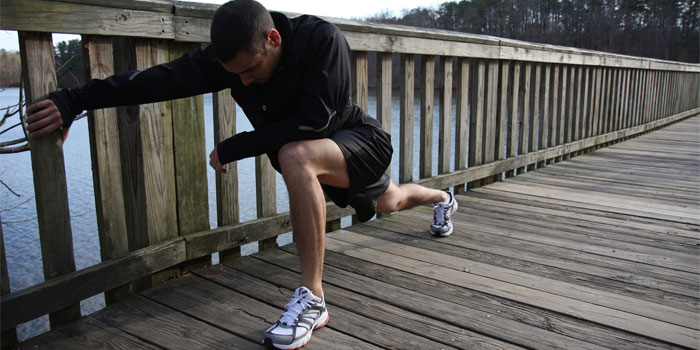
Trainers often refer to mobility as the most overlooked skill in fitness. That’s right—just like strength and power, mobility is a skill you can improve through training. In fact, mobility often becomes a limiting factor for the other two, says Kelly Starrett, owner of CrossFit San Francisco and author of Becoming a Supple Leopard. Why? Because if you can’t move a joint effectively through its full range of motion, you can’t tap into your full strength and power. What’s more, you increase your risk of injury as other areas of your body are forced to pick up the slack.
Think you’re mobile enough? Take this test: Spread your feet shoulder-width apart and drop into a deep squat (butt to calves) with your chest up and back flat. Now hold that position for 10 minutes. [Editor’s Note: Yes, we mean 10 minutes—that’s not a typo.]
If you found that excruciating (or impossible), you’re not alone. “Most people fail,” says Starrett, explaining that there’s an epidemic of “incomplete motor control” in western culture. We’re born supremely mobile, he says, as anyone who has witnessed a toddler in action knows. But by the time we enter adulthood, we’ve lost much of that innate flexibility. “We spend so much time sitting—both at home and at work—that our bodies forget how to move,” says Starrett, adding that the result is a handful of fairly predictable patterns of immobility, including tight hips, rigid shoulders, stiff backs, and quads as taut as piano strings.
If you failed the squat test, you felt the consequences of tight hips firsthand as your knees caved and your back rounded to take over the load. Stiff ankles (another common “pattern”) only complicate matters, causing your heels to lift, your pelvis to tilt, and tension throughout your body to soar. And mobility issues aren’t limited to the lower body—tight shoulders can cause your back to round every time you do overhead presses, setting stage for pain that ripples from those joints right down to the lumbar spine. “But the good news is that you can begin to reclaim that lost mobility in just 10 minutes a day,” says Starrett.
Starrett’s fix: The following five exercises. “Perform them several times a week—post-workout, before bed, or both,” he says. “Very soon you’ll notice that your lifting more weight, experiencing less pain, and suffering fewer injuries that keep you from working out.”
T-Spine Roll
Target: Thoracic (upper) spine
Benefits: Opens the upper back, boosts core stability, and relieves pressure on the lower spine.
Grab two lacrosse or tennis balls and tape them together. Lie face-up on the floor with your new “roller” positioned just below your shoulder blades (your spine should rest between the balls). Raise your arms above your chest and hook your thumbs together. Now lower your arms toward the floor behind your head. Do as many reps as you can up to 100 (shoot for at least 50). Scoot forward to move the roller a few inches up your spine, and repeat.
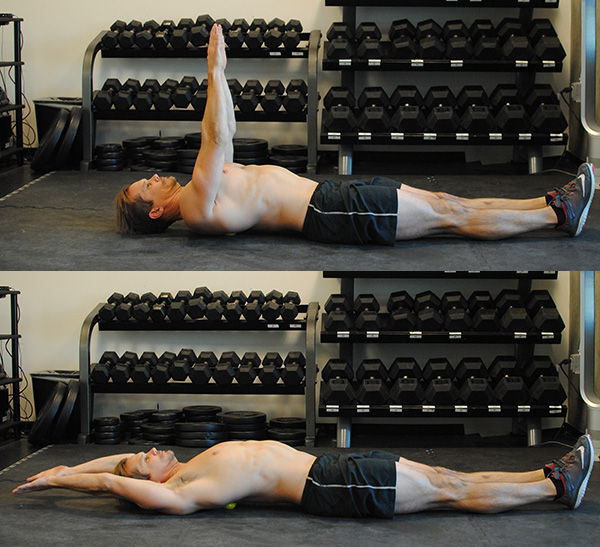
Psoas Extension
Target: Hips
Benefit: Stretches the hip flexors (psoas), improving hip mobility and total body stability.
Stand inside a doorframe so that you’re facing one of the jambs. Carefully step back with your right leg, moving your foot outside the door along the wall as you lower your body into a lunge (your back should touch the jamb behind you). Reach up with both hands and grab the jamb as high above your head as possible. Hold for as long as you can up to 2 minutes. Stand up and repeat, stepping back with your left leg.
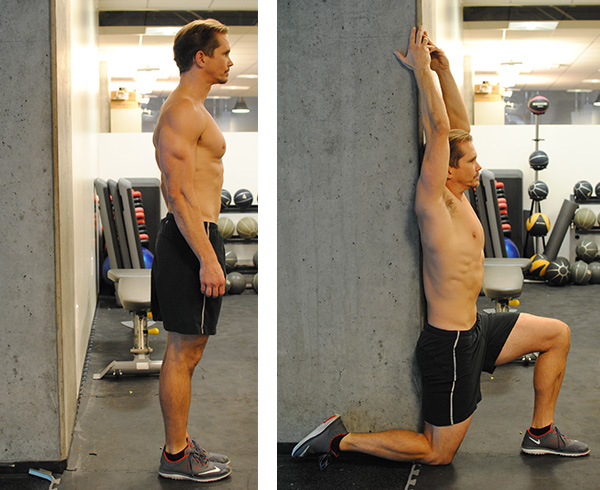
Lunge and Twist
Target: Entire body
Benefit: Relieves tension in the glutes, hamstrings, hips, groin, and torso, enhancing range of motion throughout the body.
Step forward with your right leg into a deep lunge, placing your left hand on the floor and your right hand on your right foot (arm against inner thigh). Hold your foot firmly against the ground as you press your right knee outward with your arm. Hold for 5 seconds, then relax for 5 seconds. Repeat for a minute and half. Without moving your hands, rotate your torso up to your right, and then up to your left. Repeat five times, taking 10 seconds per rotation. Stand up, step forward with your left leg, and repeat on that side.
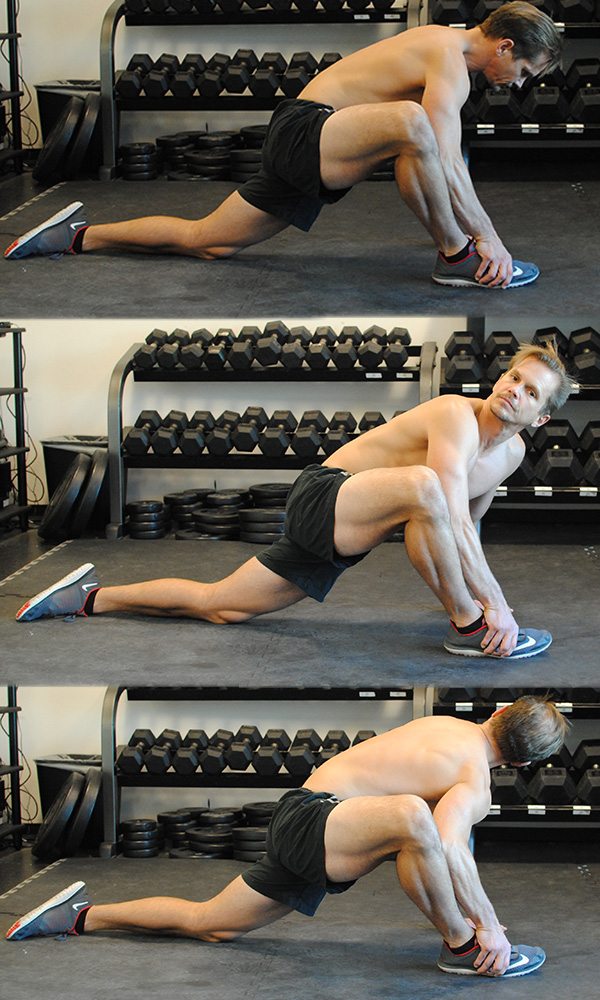
Overhead Bench Stretch
Target: Shoulders, lats, and triceps
Benefit: Increases range of motion in your shoulders, and loosens your lats and triceps.
Grab a broomstick or similarly sized pole with your hands about six inches apart, palms down. Kneel in front of a bench or chair and place your elbows on its surface so that they’re about fist-width apart. Move your knees backward and lower your torso toward the floor until you feel a deep stretch in your shoulders and lats. Hold for as long as you can up to 2 minutes.
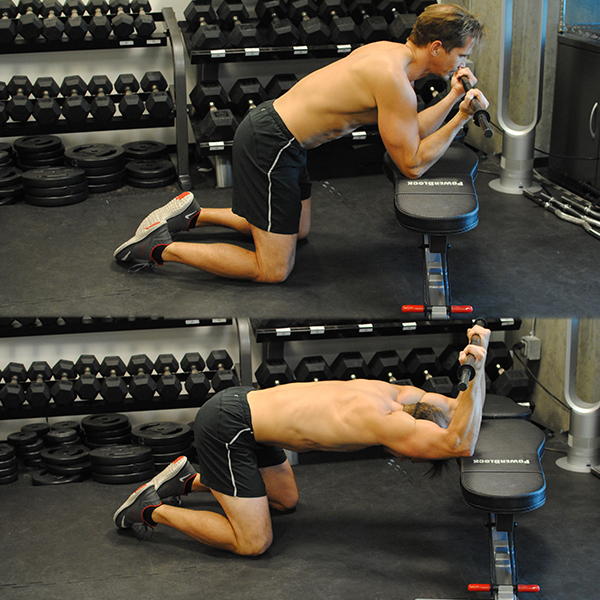
Half-Kneeling Lat Extension
Targets: Shoulders and lats
Benefit: Stretches your lats, improving upper body mobility.
Loop a resistance band around a sturdy pole or other immobile object at shoulder height. Face the pole and grab the band with your right hand, palm down. Step back to create tension in the band with your arm extended toward the attachment point. Now step back with your right leg into a deep lunge, allowing your right arm to extend above your head at a 45-degree angle. Hold for as long as you can up to 2 minutes. Stand up, switch sides, and repeat.
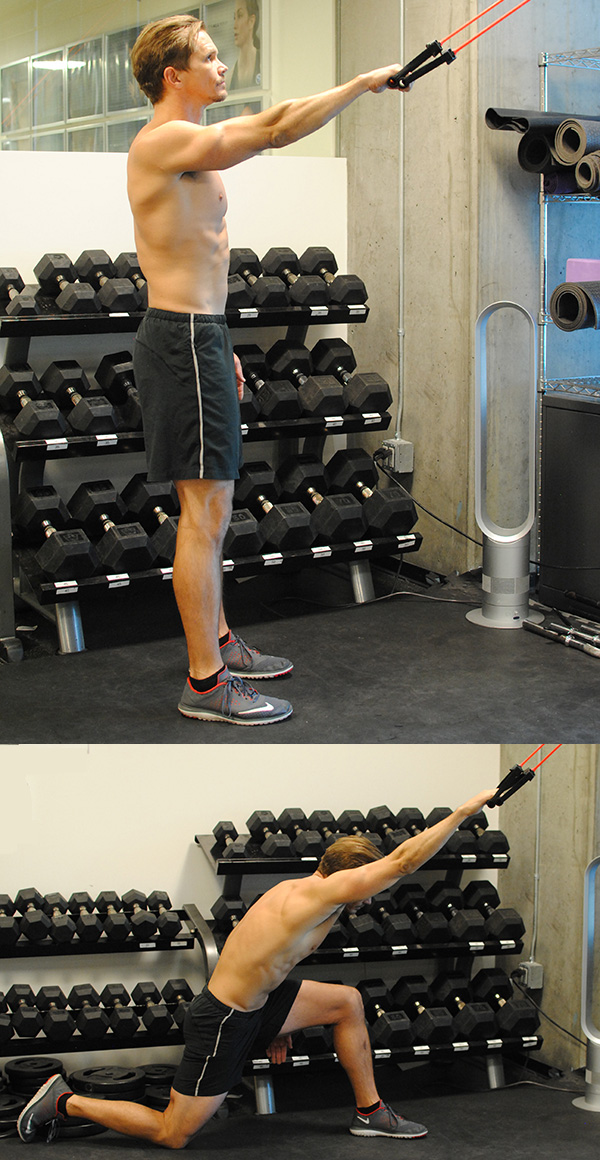
By: Beachbody

No comments:
Post a Comment